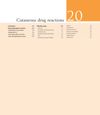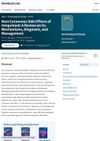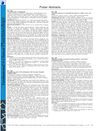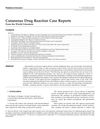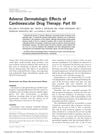Spontaneous Cutaneous Adverse Drug Reaction Reports: An Analysis of a 10-Year Dataset in Singapore
March 2019
in “
Pharmacology Research & Perspectives
”
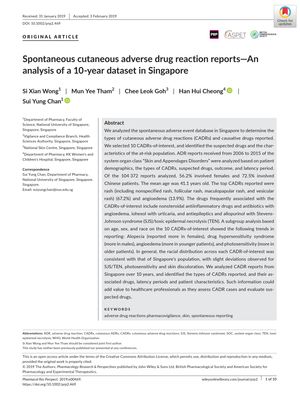
TLDR In Singapore, most skin reactions to drugs were in females and Chinese, often caused by painkillers, antibiotics, and some other drugs, with serious cases linked to genetics.
The document summarized a study that analyzed 104,372 spontaneous adverse drug reaction reports related to skin disorders in Singapore from 2006 to 2015. The majority of reports involved females and Chinese patients, with rash and angioedema being the most common reactions. Nonsteroidal anti-inflammatory drugs (NSAIDs), antibiotics, and certain other drugs like iohexol, antiepileptics, and allopurinol were frequently associated with these reactions. Serious reactions such as Stevens-Johnson syndrome/toxic epidermal necrolysis (SJS/TEN) were linked to antiepileptics, antibiotics, and allopurinol, with genetic predispositions playing a role in drug-induced severe cutaneous adverse reactions (SCARs). The study's findings are valuable for healthcare professionals in managing CADR cases and highlight the importance of pharmacogenetics in drug safety. The Health Sciences Authority (HSA) of Singapore is considering using electronic medical records to improve the detection of adverse drug reactions.


